The Start menu -- cause or effect?
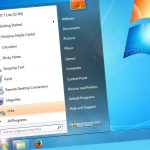
When Windows 95 was released there was a lot of fuss about the Start menu and debate about whether it would catch-on. It was a significant departure from icon shortcuts in program groups; or superficially at least. In reality, it was simply the program groups (folders) put in a hierarchical order and rather wisely, the option to place folders, icons and shortcuts on the desktop remained (to this day).
The Start menu developed; it grew out of the logic of the program shortcut and built upon that logic. It was not intended to abruptly impose a new paradigm but to slowly replace the shortcut as customers became comfortable with the concept. That journey never really ended, as the icon shortcut was not phased-out -- why would it be?
Panasonic Toughpad 4K -- A tablet on steroids

Apparently smartphones are not the only area of technology that is growing, rather than shrinking. Tablets, it appears, are moving in the same direction, at least if Panasonic has its way. Beginning on September 7 you can purchase a massive 20-inch Windows 8 tablet from the hardware maker.
"The Panasonic Toughpad 4K will enable photographers, architects, cinematographers and other creative professionals to experience the cutting edge of high resolution tablet technology", says Microsoft's Gavin Gear.
Lenovo Flexes and does Yoga with new convertible and dual-mode computers
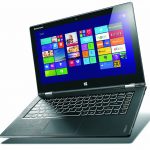
Earlier in the week, Lenovo announced some intriguing new products -- business-focused laptops and a game-changing display. For most companies, this would be enough excitement for a year, let alone a week. However, the computer maker seems to be focused on clobbering consumers over the head with great products -- hey, no complaints here!
A couple of weeks ago, I reviewed the Yoga 11s. While I loved the machine, I did mention its Ivy Bridge processor as a very slight negative in the current Haswell world in which we live. Fortunately Lenovo will start giving the machine options of Haswell up to Core i7. This is great news as an already great laptop only gets better.
Jelly Bean speeds up, Gingerbread and Ice Cream Sandwich slow down

Unsurprisingly, Jelly Bean continues to increase its dominance in the green droid distribution charts, with the latest sweet in the family running on more than 45 percent of all Android devices visiting Google Play during the seven days ending September 4.
In the latest distribution charts, the first two Jelly Bean iterations -- Android 4.1 (36.6 percent) and Android 4.2 (8.5 percent) -- have a combined share of 45.1 percent, a number that is 4.7 percentage points higher compared to the previous data set that was released in early-August. A month ago, Jelly Bean had a 40.5 percent distribution level (34 percent for Android 4.1 and 6.5 percent for Android 4.2).
Evernote 5 for Windows Desktop sports new look, adds Shortcuts and Reminders
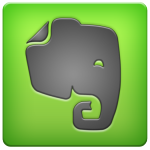
Evernote Corporation has finally released Evernote 5.0 for Windows Desktop, adding a new look and features that have already appeared in the program’s Mac build.
The cloud-based note-taking tool opens with a brand new redesign, the first since its initial release on the Windows desktop platform. Evernote claims the new look -- a flatter, stripped back one -- makes it easier to both browse and create notes by removing distracting on-screen elements. The new look is also designed to work better across different Windows platforms.
Windows 8.1 for work: 27 great new features aimed at the office
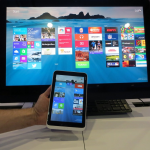
The countdown to Windows 8.1 is officially on. Whoever thinks that Windows 8.1 is squarely a consumer-centric release is heavily mistaken. After spending a month with Windows 8.1 Pro on my Thinkpad X230 Tablet, I can definitively say that Windows 8.1 is shaping up as a rock-solid option for the enterprise. I've previously written about why businesses should have been considering Windows 8 for their next upgrade cycles. With 8.1, Microsoft's latest OS is a service pack on more than a few steroids.
By any measure, I've been a vocal, bullish early adopter of Windows 8. My day to day consulting work for customers doesn't allow me to stay stuck on previous generations of Windows. Even if I did prefer Windows 7, my mixed client base is moving to 8 whether I like it or not. I need to be prepared for the questions and troubleshooting that ensues, which means I need to be their resident Windows 8 expert.
HyperOffice integrates social collaboration with project management

In recent weeks we've seen social collaboration become the new black as far as business computing is concerned. Gartner has reported growing expectations from social technologies and new product releases from major players have focussed on this sector.
Washington DC-based HyperOffice was an early entrant into this field and its current offering is aimed at SMBs looking for a scalable solution that will grow with the business. As well as social collaboration HyperOffice includes online document and project management, shared calendars and contacts. It also lets you build an intranet, maintain wikis and forums and handle business email as well as offering traditional project planning tools like Gantt charts.
Microsoft-Nokia Deal: a tale of desperation

After Microsoft announced that it was acquiring substantially all of Nokia's devices & services business, the stock market painted a fairly accurate picture of what this deal means -- Nokia investors were relieved as the stock surged by nearly 35 percent, while Microsoft investors responded by driving the stock down by 5 percent. Based on my prior experience in technology M&A (Mergers and Acquisitions), I wanted to take a look at the motivations for the transaction and the viability of Microsoft's long-term consumer strategy.
Let's begin by taking a look at the deal terms. Microsoft will be paying Nokia €3.79 billion for its handset division (including 8,500 design patents) and another €1.65 billion in patent licensing. As a part of the deal, Microsoft will gain rights to the Lumia and Asha brands, but Nokia will retain the rights to the "Nokia" brand. However, Microsoft has licensed the "Nokia" brand, exclusively for use on low-end S30/40 feature phones.
Why Microsoft really bought Nokia

A good friend of mine called Microsoft buying Nokia "two stones clinging together trying to stay afloat". I wouldn’t go that far but I don’t think the prognosis is very good. On the other hand, I’m not sure it has to be good for Microsoft to achieve its goals for the merger. Huh?
This is why you come here, right, for my lateral thinking? I don’t think Nokia has to succeed in order for Microsoft to consider the acquisition a success.
AVG's 2014 range adds new privacy tools, better disk cleanup

AVG has announced the public availability of its 2014 product range, including AVG AntiVirus FREE 2014, AVG AntiVirus 2014, AVG Internet Security 2014, AVG Premium Security 2014 and AVG PC TuneUp 2014.
All the security applications now include a File Shredder, which allows users to securely delete files or folders so that they can't be recovered at some later date.
Watch Out! Samsung announces Galaxy Gear wrist-wear
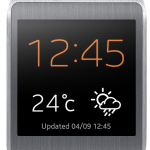
When I was in elementary school, I thought I was pretty cool. You see, I wore the Nintendo Tetris watch. Sadly, I have not been cool since. I have patiently waited over 20 years for a watch to match the epic-awesomeness of that game watch. The rumor-mill has been churning out a lot of smart-watch news this year, pointing to Apple and Google.
Today, Samsung beats both of those companies to market and announces the Galaxy Gear smart-watch. The company describes this new watch as "a perfect companion device that further integrates the Samsung Galaxy experience into everyday life. Samsung Galaxy Gear combines smart device connectivity, tailored technological features, and stylish design as a single premium accessory".
Aftermath of a tsunami -- Google Maps tells the tale

On March 11, 2011 a magnitude 9.0 earthquake struck off the coast of Japan, but despite the extremely high intensity of the tremor itself, it was the resulting tsunami that caused the real damage. Most notable, and scary, was the meltdown of three reactors at the Fukushima nuclear plant.
Now, two years after the tragedy that cost more than 15,000 people their lives, Google Maps, through Street View, takes users back into the teeth of this disaster.
Samsung Galaxy Note 3: new 5.7-inch monster phone packs a punch

At IFA in Berlin, Samsung takes the lid off its giant screened smartphone -- the Galaxy Note 3. It use to be the case that as technology developed, devices became smaller -- colossal Walkmans were replaced by more svelte models, chunky Discmans by portable players barely bigger than the disc they were playing. There was a time when the fashion for cell phones took a similar route, but the current propensity for larger screens shows that this no longer rings true.
Samsung's Note range has long taken the idea of a large screened smartphone to the extreme, but the third generation pushes things even further. Equipped with a whopping 5.7 inch screen, the third iteration of the phone is thinner than its predecessor at just 8.3 millimeters, and also lighter at a mere 168g. The Super AMOLED display, boasting a resolution of 1920 x 1080 risks being something of a power sucker, but it's backed up by a 3,200mAh battery.
HDMI 2.0 -- 4K TV finally invades the living room

Ever since consumers flocked to HD flat-screen television the manufacturers have been busy hatching plans for the next get-rich-quick scheme. With 3D pretty much in the toilet, the next scheme to get consumers to all fork over their money yet again is 4K. Also known as ultra HD, the spec has twice the horizontal and vertical resolution of the current 1080p format, with four times as many pixels.
Today that vibrant 4k future moves a step closer with the official announcement of HDMI 2.0. The specifications bandied about in the announcement are eye-popping. "This latest HDMI Specification, the first to be developed by the HDMI Forum, offers a significant increase in bandwidth (up to 18Gbps) to support new features such as 4K at 50/60 (2160p), which is four times the clarity of 1080p/60 video resolution; 32 audio channels; as well as dynamic auto lip-sync and extensions to CEC".
Ubuntu Linux finally defaults to 64-bit

I still remember buying my first 64-bit processor -- the AMD Athlon 64 3200+. I bought it a decade ago for a system built in 2003. At the time, home computers were still mostly using 32-bit processors and running 32-bit software. However, one of my favorite Linux distributions, Ubuntu, has been offering 64-bit versions since 2004 with the Warty Warthog release.
Even though Ubuntu has offered a 64-bit version since then, Canonical has always suggested the 32-bit variant as the recommended or default download option -- even today. However, things are about to change. According to Dmitrijs Ledkovs of Canonical, "on the download pages starting from 13.10 release the messaging will be adjusted to direct users by default at the 64-bit image, and hints will be given as to when users should select a 32-bit option instead."
© 1998-2024 BetaNews, Inc. All Rights Reserved. Privacy Policy - Cookie Policy.




